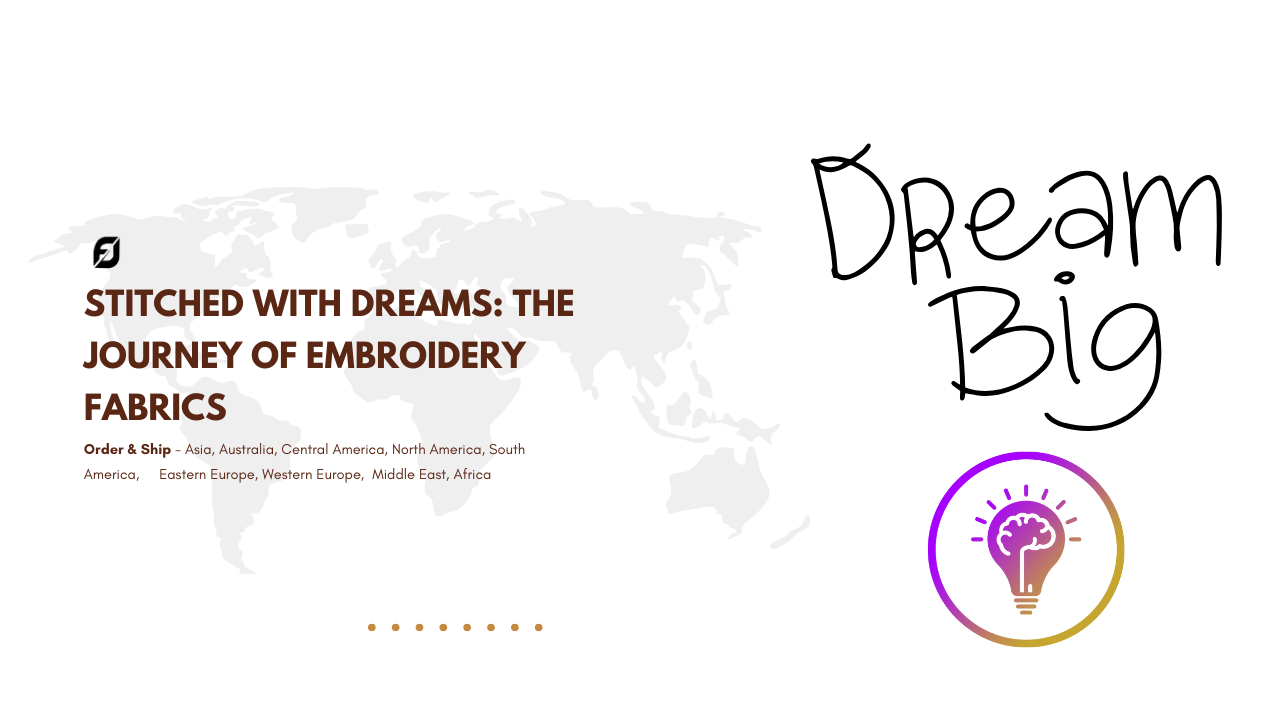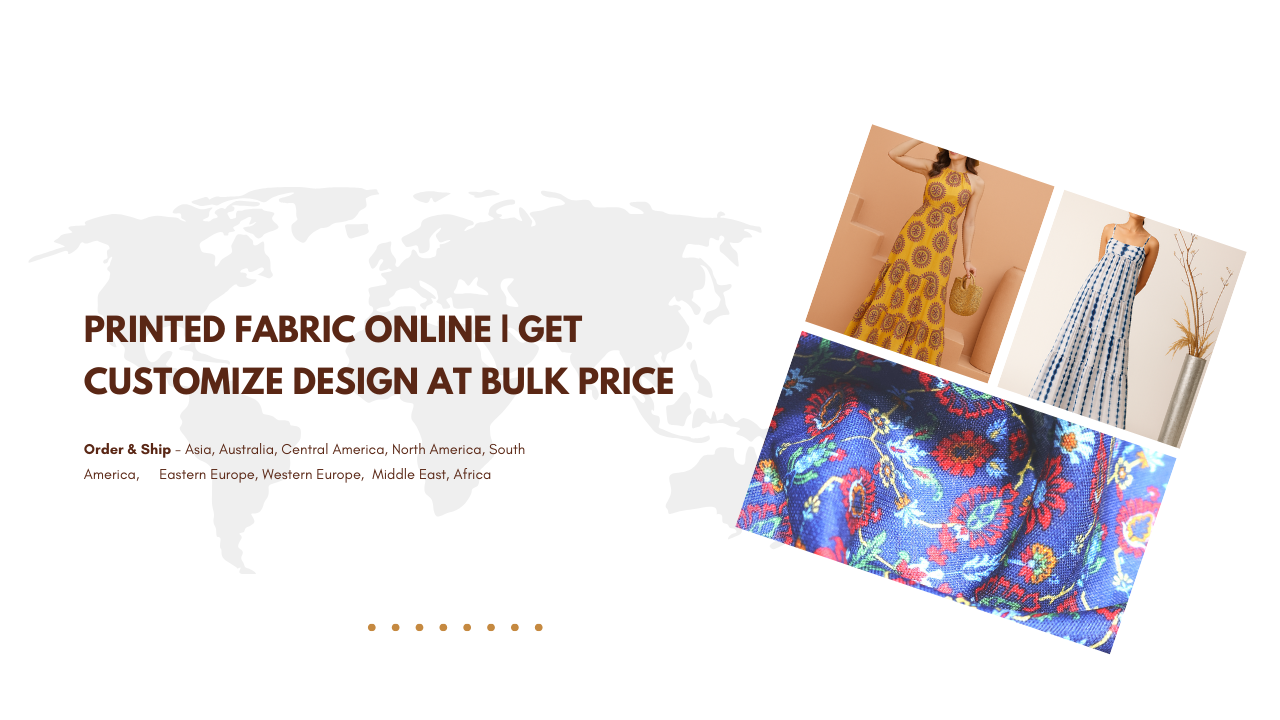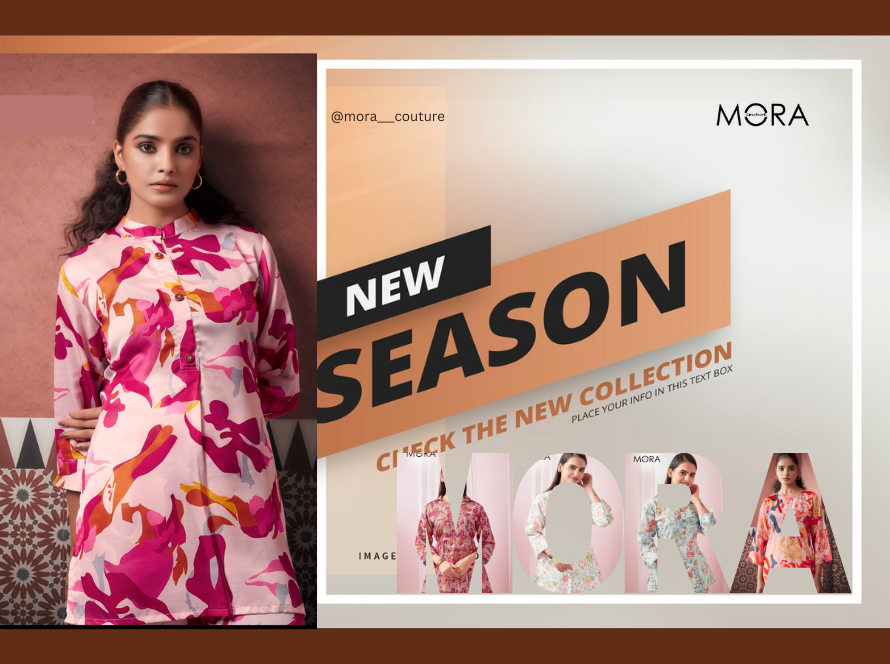Chinon fabric is a lightweight, sheer textile made from high-quality silk or synthetic fibers.
Renowned for its soft texture and subtle sheen, Chinon offers a luxurious feel while draping beautifully.
Chinon Embroidery Fabric: Versatility, Uses & Benefits
This versatile fabric is perfect for creating elegant garments that are both comfortable and stylish.
Uses of Chinon Fabric
Chinon fabric is widely utilized in the fashion industry due to its adaptability. Some popular applications include:
- Dresses and Gowns: The elegant drape of Chinon makes it ideal for evening gowns and party dresses, providing a sophisticated look for any occasion.
- Blouses and Tops: Lightweight and breathable, Chinon is perfect for creating fashionable blouses that can be dressed up or down.
- Scarves and Stoles: Its delicate nature lends itself well to chic scarves and stoles, making them perfect accessories for any outfit.
Garment Types Made from Chinon Embroidery Fabric
Chinon embroidery fabric is particularly favored for creating:
- Kurtis and Anarkalis: The fabric’s beautiful flow and embellishment potential make it an excellent choice for traditional Indian wear.
- Sarees: Chinon adds a regal touch to sarees, especially when combined with intricate embroidery techniques.
- Lehengas: Designers often select Chinon for lehengas, creating ethereal bridal and festive wear that stands out.
Chinon Print Fabric Creation
Chinon print fabric is created using advanced techniques such as digital printing and block printing. These methods allow for vibrant and intricate designs, enhancing the fabric’s appeal. Chinon prints are perfect for casual wear, providing stylish options for everyday outfits.
Is Chinon Fabric Eco-Friendly?
Chinon fabric, especially when derived from silk, is considered more environmentally friendly compared to many synthetic fabrics. However, the sustainability of Chinon largely depends on the manufacturing processes employed. Opting for brands that use eco-conscious practices is essential for minimizing the ecological footprint of fabric production.
Global Usage of Chinon Fabric
Chinon fabric enjoys immense popularity in several countries, particularly in India, the Middle East, and select regions of Europe and North America. Its elegant and versatile nature has made it a staple in both traditional and contemporary fashion across the globe.
Madhav Fashion’s Premium Offerings
Madhav Fashion is a leading manufacturer of Chinon fabric, providing:
- Plain White Chinon Fabric (RFD): This premium fabric serves as a versatile base for various garment creations, known for its elegance and adaptability.
- Chinon Embroidery Fabric: With a diverse selection of beautifully embroidered Chinon fabrics, Madhav Fashion caters to a wide range of design needs.
- Chinon Digital Prints: Utilizing the latest digital printing technology, Madhav Fashion offers vibrant, long-lasting prints on Chinon fabric, perfect for fashion-forward designs.
Moreover, Madhav Fashion provides customization options and affordable Minimum Order Quantities (MOQs), ensuring that designers and manufacturers can access high-quality fabrics tailored to their needs.
Chinon embroidery fabric stands out as an exceptional choice for creating stylish and sophisticated garments. With its broad applications and the premium offerings from Madhav Fashion, designers can bring their creative visions to life while maintaining a focus on quality and affordability. Embrace the elegance of Chinon fabric in your next fashion endeavor!
_____________________________________________
What is Chinon Fabric and What Are Its Characteristics?
Chinon fabric is a lightweight, sheer textile primarily made from silk or synthetic fibers. This fabric is known for its soft texture, delicate drape, and subtle sheen, making it a popular choice in the fashion industry. One of the standout features of Chinon fabric is its versatility; it can be used for both casual and formal garments. The fabric’s breathable nature ensures comfort, even in warm climates, while its elegant appearance adds a touch of sophistication to any outfit.
Chinon fabric is also highly receptive to dyes and prints, allowing for vibrant colors and intricate patterns. This quality makes it ideal for fashion designers seeking to create eye-catching pieces. Additionally, the fabric can be easily embellished with embroidery, sequins, or beads, enhancing its visual appeal. When cared for properly, Chinon fabric can maintain its beauty over time, making it a valuable addition to any wardrobe. Whether used in dresses, blouses, or accessories, Chinon fabric’s unique characteristics make it a favorite among designers and consumers alike.
How Is Chinon Fabric Different from Other Fabrics?
Chinon fabric stands out from other textiles due to its unique combination of qualities. While it shares some similarities with fabrics like chiffon or georgette, Chinon offers a distinct softness and sheen that set it apart. Unlike chiffon, which can be stiffer and less forgiving in terms of drape, Chinon has a flowing quality that makes it suitable for a wide range of garments.
Additionally, Chinon fabric is often more lightweight than georgette, providing a comfortable fit without sacrificing style. This makes it an excellent choice for creating elegant evening wear, party dresses, and casual blouses. Furthermore, Chinon’s ability to hold intricate embroidery or prints adds to its appeal, allowing designers to create visually stunning pieces.
In terms of care, Chinon typically requires gentle handling to maintain its delicate nature, unlike some sturdier fabrics that can withstand rough treatment. Overall, Chinon fabric’s unique texture, drape, and versatility make it a favored option for fashion enthusiasts looking for something special in their wardrobe.
What Types of Garments Can Be Made from Chinon Embroidery Fabric?
Chinon embroidery fabric is incredibly versatile and can be used to create a wide variety of garments. Its lightweight and sheer quality makes it particularly suitable for formal wear, such as evening gowns and cocktail dresses. Designers often choose Chinon for its elegant drape, which enhances the overall silhouette of the garment.
In addition to dresses, Chinon fabric is commonly used for creating blouses and tops that are stylish and breathable. The fabric’s ability to hold intricate embroidery allows for beautiful embellishments, making it a popular choice for festive and traditional wear like kurtis and anarkalis.
Chinon is also an excellent option for sarees, where its luxurious feel and lightness add to the grace of the attire. Furthermore, it can be used to make accessories such as scarves and stoles, providing a cohesive look for any outfit. Overall, the versatility of Chinon embroidery fabric enables designers to experiment with various styles, ensuring that it can cater to different fashion preferences.
How Is Chinon Fabric Made and What Are Its Environmental Impacts?
Chinon fabric is typically made through a weaving process that involves silk or synthetic fibers. The raw materials are spun into yarn, which is then woven together to create the sheer, lightweight textile. While traditional Chinon is made from silk, many modern manufacturers use synthetic alternatives to make the fabric more affordable and accessible.
The environmental impact of Chinon fabric largely depends on the source of the materials and the manufacturing processes employed. Silk production can be resource-intensive, requiring significant water and energy, and may involve ethical concerns regarding the treatment of silkworms. On the other hand, synthetic fibers can contribute to microplastic pollution when washed.
However, there are eco-friendly options available. Some manufacturers prioritize sustainable practices, using organic materials and environmentally responsible methods to produce Chinon fabric. Additionally, many brands are now exploring recycled fibers and eco-conscious dyes to reduce their environmental footprint. As consumers become more aware of sustainability, it’s essential to choose Chinon fabric from brands committed to responsible production methods.
Why Is Chinon Fabric Popular in Indian Traditional Wear?
Chinon fabric has gained immense popularity in Indian traditional wear due to its luxurious feel, beautiful drape, and ability to hold intricate embroidery. The lightweight and sheer nature of Chinon makes it an ideal choice for various traditional garments, such as sarees, lehengas, kurtis, and anarkalis.
The fabric’s softness and comfort make it perfect for both everyday wear and special occasions. In Indian culture, where ornate and embellished clothing is highly valued, Chinon fabric allows for elaborate designs and decorations, including sequins, beads, and intricate embroidery. This versatility means that Chinon can be adapted for festive celebrations, weddings, and traditional events, showcasing the rich craftsmanship of Indian artisans.
Moreover, Chinon’s ability to hold vibrant colors and intricate patterns makes it appealing to designers looking to create eye-catching pieces. As a result, Chinon fabric has become a staple in the wardrobes of many individuals who appreciate its elegance, versatility, and cultural significance in Indian fashion.
What Is the Care Routine for Chinon Embroidery Fabric?
Caring for Chinon embroidery fabric is essential to maintain its beauty and longevity. Due to its delicate nature, Chinon requires gentle handling during washing and storage. It is recommended to hand wash Chinon garments in cold water using a mild detergent to prevent damage. Avoid using harsh chemicals or bleach, as these can strip the fabric of its color and sheen.
When drying Chinon fabric, it’s best to air dry by laying the garment flat or hanging it in a shaded area away from direct sunlight, which can cause fading. If ironing is necessary, use a low heat setting and place a thin cloth between the iron and the fabric to avoid scorching. Steaming is often a better option for removing wrinkles without risking damage.
For long-term storage, keep Chinon garments in a cool, dry place away from moisture and direct light. Using breathable garment bags can help protect the fabric from dust and pests. By following these care tips, you can ensure that your Chinon embroidery fabric remains beautiful for years to come.
How Can Designers Use Chinon Fabric in Their Collections?
Designers can leverage Chinon fabric in various ways to enhance their collections. Its lightweight and sheer qualities make it ideal for creating elegant evening wear, such as flowy gowns and stylish cocktail dresses. The fabric’s ability to hold intricate embroidery allows for unique detailing, making it a favored choice for festive and bridal collections.
Chinon can also be used to create versatile pieces like blouses and tops, which can be paired with both casual and formal outfits. Additionally, the fabric works well for layering, enabling designers to incorporate it into various styles, from ethnic wear like kurtis and sarees to contemporary outfits.
When it comes to prints, Chinon fabric is highly receptive to digital printing, allowing designers to experiment with vibrant colors and intricate designs. This opens up possibilities for creating statement pieces that stand out in any collection. By using Chinon fabric creatively, designers can offer unique and stylish garments that cater to a wide range of customer preferences, ensuring that their collections remain relevant and appealing.
What Are the Benefits of Using Chinon Digital Print Fabric?
Chinon digital print fabric offers numerous benefits that make it an attractive choice for designers and consumers alike. One of the key advantages is the ability to achieve vibrant colors and intricate designs with precision. Digital printing allows for detailed patterns that can enhance the aesthetic appeal of Chinon garments, making them visually striking.
Additionally, digital printing is more eco-friendly than traditional printing methods, as it often uses less water and generates less waste. This aligns with the growing consumer demand for sustainable fashion options. Furthermore, digital prints can be customized easily, enabling designers to create unique designs tailored to their specific vision and client preferences.
Another benefit is that digital print Chinon retains the fabric’s lightweight and breathable qualities, ensuring comfort without sacrificing style. This versatility allows designers to use Chinon digital print fabric for a variety of garments, from casual wear to formal attire. Overall, Chinon digital print fabric combines creativity with sustainability, making it a smart choice for modern fashion collections.
How Does Madhav Fashion Stand Out in the Chinon Fabric Market?
Madhav Fashion distinguishes itself in the Chinon fabric market through its commitment to quality, variety, and customer service. As a leading manufacturer, Madhav Fashion offers an extensive selection of Chinon fabrics, including plain white Chinon fabric (RFD), beautifully embroidered options, and vibrant digital prints. This diverse range ensures that designers have access to the materials they need for various garment types.
What sets Madhav Fashion apart is its focus on customization and affordability. The brand understands the needs of designers and manufacturers, providing flexible Minimum Order Quantities (MOQs) that make premium fabric accessible for businesses of all sizes. This approach fosters strong relationships with clients, as they can order exactly what they need without excess inventory.
Additionally, Madhav Fashion is committed to sustainable practices, ensuring that its production methods are environmentally friendly. By prioritizing quality, customization, and sustainability, Madhav Fashion has established itself as a trusted source for Chinon fabric, catering to the evolving needs of the fashion industry while maintaining high standards of excellence.





